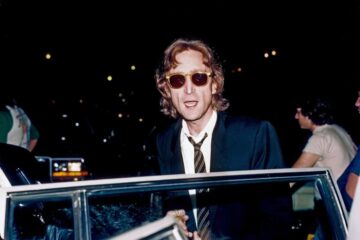Rock and roll was still a relatively new genre when The Beatles first started. Although the first wave of acts like Chuck Berry may have excited audiences worldwide, it took the ingenuity of the Fab Four to take the genre into unexplored areas, working with George Martin to turn their albums into sonic works of art. While the band would eventually make the studio their home in the back half of the 1960s, a specific group of musicians were horrified working with the group.
Looking back on how much effort the band put into their later material, it would make sense why any musician would feel insecure. Even when Eric Clapton was heralded as the next guitar god, he felt uncomfortable when called in to play the guitar solo for George Harrison’s ‘While My Guitar Gently Weeps’.
Compared to the sonic leaps the band took in a post-Sgt Pepper world, they were still working out the bugs of their studio-driven sound on albums like Rubber Soul. Utilising the studio as an instrument for the first time, the band’s folk-tinged offering gave the world various musical departures, from sitar in ‘Norwegian Wood’ to the fuzz bass on ‘Think For Yourself’.
Although the creative ingenuity knocked out anyone who heard it, the band decided to go further on their following album, Revolver. Informed by the acidic visions they had at the time, both John Lennon and George Harrison rose to the occasion to create far more psychedelic music than before, including the massive psych-rock freakout ‘Tomorrow Never Knows’.
While the rest of the band were expanding their mind, Paul McCartney was working on finetuning his skills as a ballad writer. Having worked on the song ‘Yesterday’ from their last film, Help!, McCartney knew that he wanted to take his storytelling side further, penning the tune ‘Eleanor Rigby’ based on the scores of lonely people who have no one to cling to at the end of the day.
Featuring no rock instrumentation, the accompaniment was carried by George Martin’s musical score, with a string section brought in to achieve McCartney’s musical vision. When the string players showed up for work, though, they were mortified at the new techniques that Martin had suggested to them.
Suggesting that the strings play with the microphones placed close to their bodies, engineer Geoff Emerick remembered the session players being mortified, recalling in Here There and Everywhere, “The musicians were horrified! One of them gave me a look of disdain, rolled his eyes to the ceiling, and said under his breath, ‘You can’t do that, you know.’ It was a fine line; I didn’t want to make the musicians so uncomfortable that they couldn’t give their best performance, but my job was to achieve what Paul wanted”.
While it may have been an unorthodox way of recording strings up until that time, the biting sound that they got was nothing short of brilliant, creating a harsh tone reminiscent of the more chilling themes in Alfred Hitchcock’s Psycho. Although the musicians may have been uncomfortable, what they achieved in just a few hours in the studio laid the groundwork for what modern strings would sound like on pop records.



